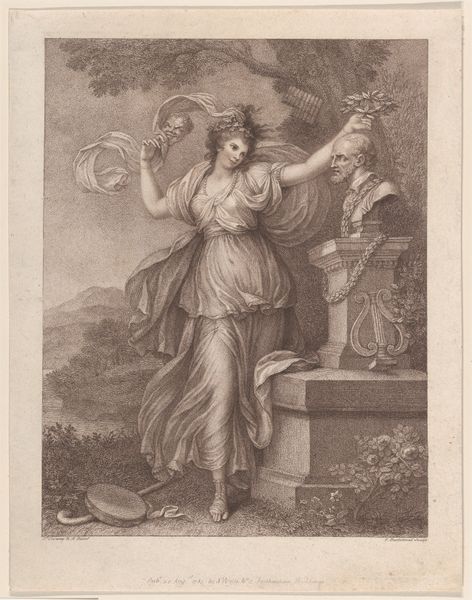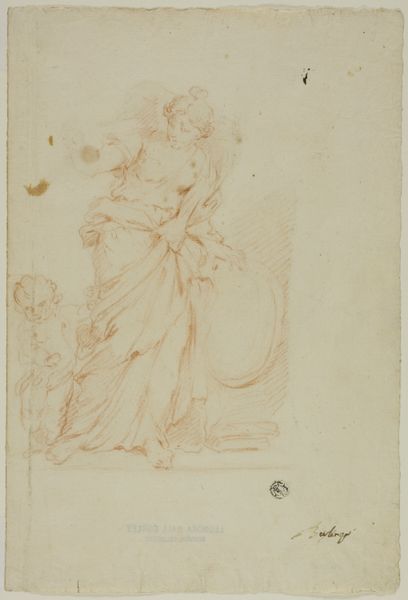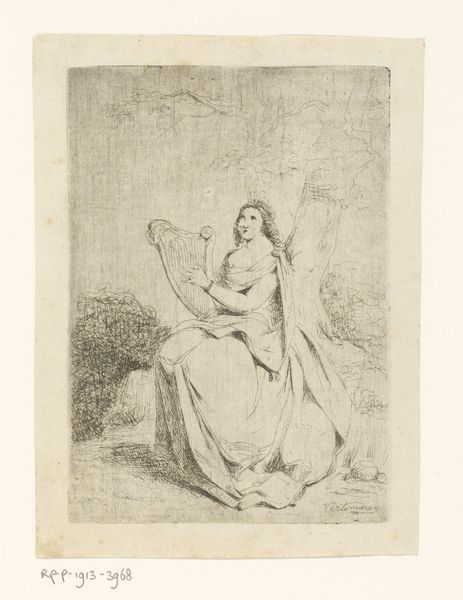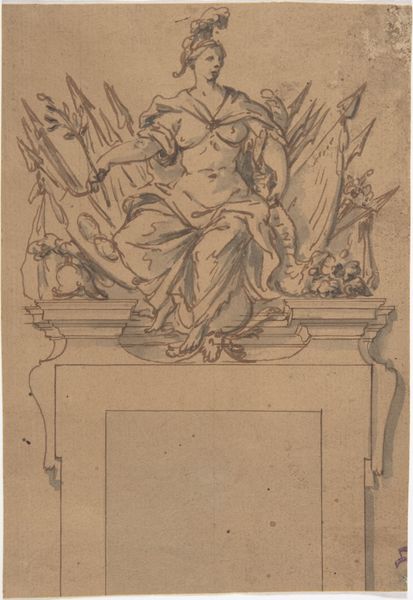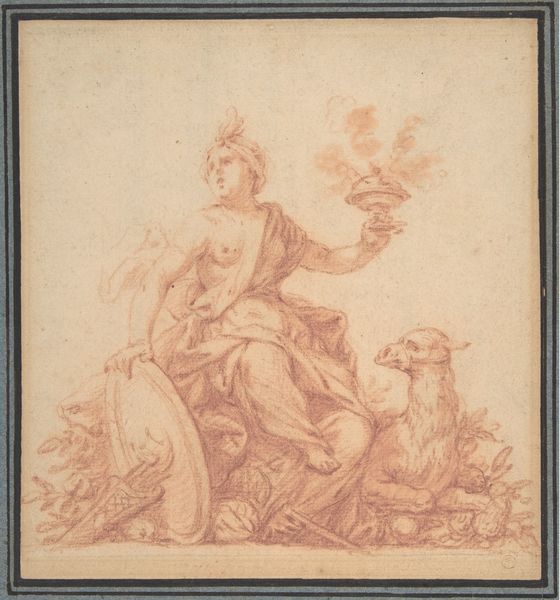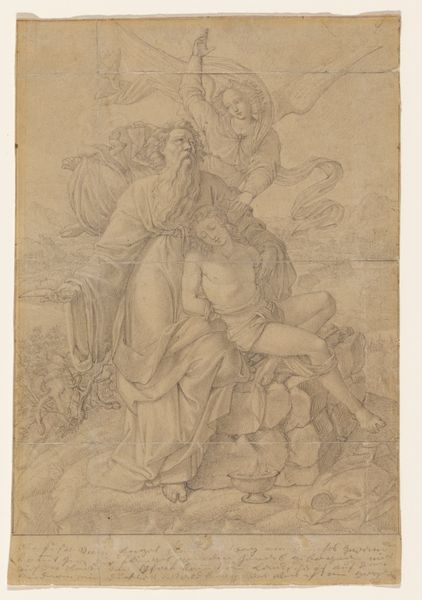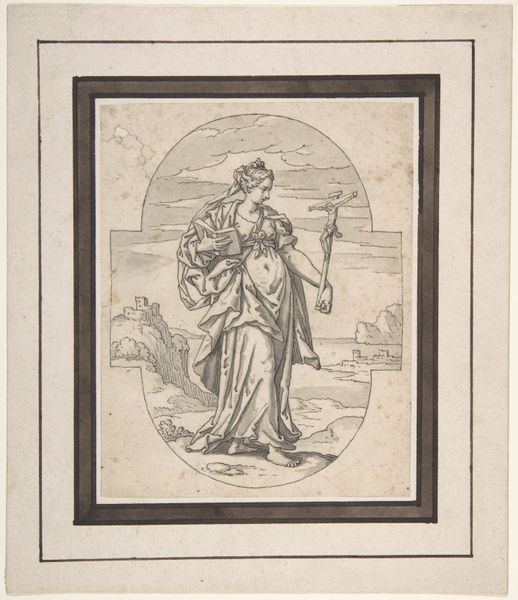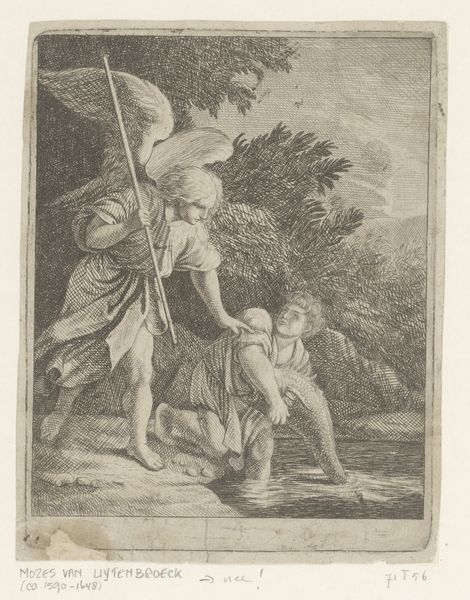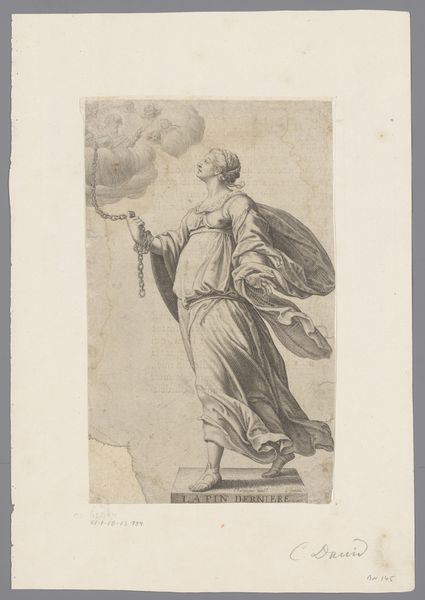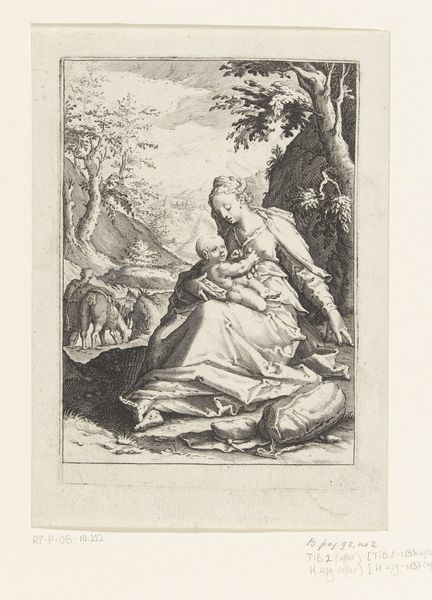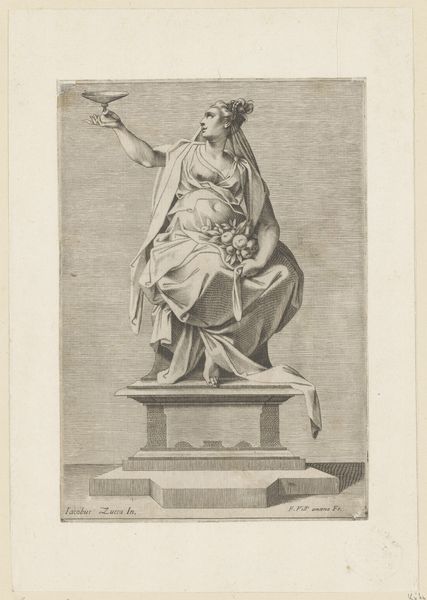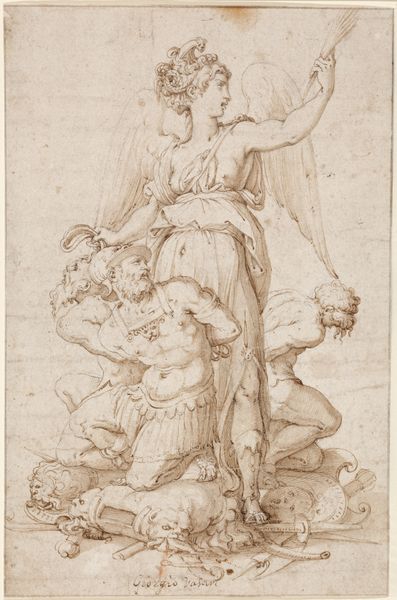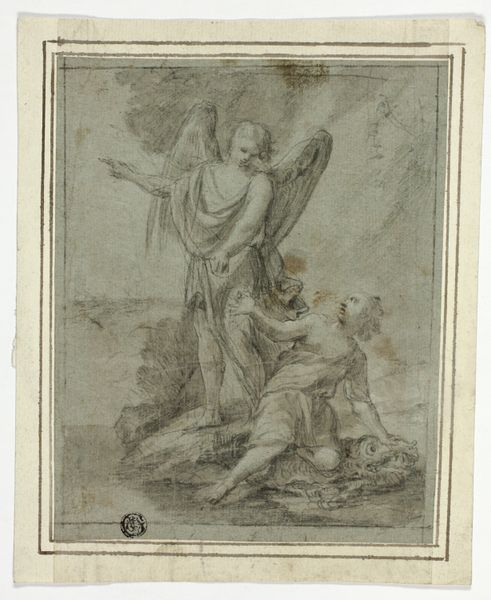
drawing, print, engraving
#
portrait
#
drawing
#
neoclacissism
#
allegory
# print
#
engraving
Dimensions: Plate: 10 3/4 x 8 1/2 in. (27.3 x 21.6 cm) Sheet: 11 3/8 × 8 13/16 in. (28.9 × 22.4 cm)
Copyright: Public Domain
Editor: This print, "Mrs. Abington as Thalia," created in 1783 by Francesco Bartolozzi, uses engraving to depict a portrait in a neoclassical style. It feels delicate, almost ethereal, because of the lines. What’s your perspective on it? Curator: What intrigues me is the engraving process itself. Think about the labor involved: the meticulous work of incising lines into a metal plate, the precise application of ink, and the pressure exerted by the printing press. It challenges our notions of artistic genius and handmade. Consider also how this print democratized art. Engravings allowed for wider distribution compared to one-off paintings. How does the increased access alter our understanding of value and taste during that period? Editor: So you're saying the means of production affect its value as a work of art? Curator: Absolutely. Bartolozzi was not only an artist but a producer. He supplied images for a burgeoning consumer market, feeding into a culture hungry for visual representations of theatrical stars like Mrs. Abington. Think about the context of 18th-century England; what role did printed images play in shaping social ideals? Do you consider printmaking a fine art? Why, or why not? Editor: That's a different way to view it, framing it in the scope of both art and production for the culture of the time. Now I wonder if Mrs. Abington understood how widely her image would be disseminated and how it supported the taste for seeing celebrity likenesses, like hers. Curator: Indeed. Reflect on what happens when artwork leaves the creator and becomes something consumed, circulated, bought, sold, and copied. This process itself becomes part of the art’s evolving narrative. Editor: Thinking about that broad reach and audience changes my initial interpretation. I now wonder what materials Bartolozzi used. Thanks for pointing out how closely art is intertwined with social and labor practices.
Comments
No comments
Be the first to comment and join the conversation on the ultimate creative platform.
